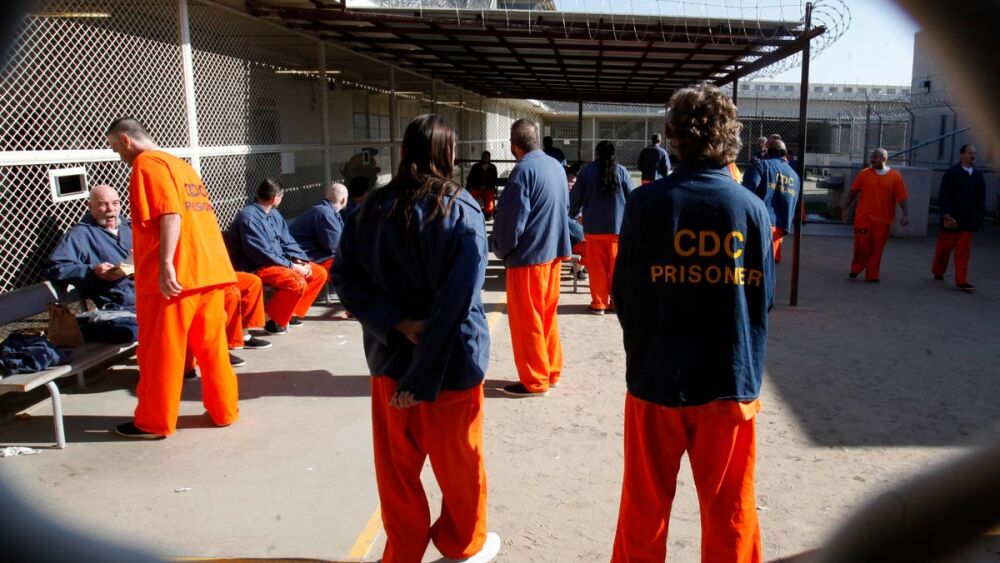By Alexander Wessling
In the already dangerous environment of prisons and jails, COVID-19 has become the biggest threat to inmate and staff safety.
As of April 9, the Bureau of Prisons confirmed 283 cases of COVID-19 among federal inmates, and 125 cases among BOP staff. Fourteen inmates and seven staff have recovered. Eight inmates, and zero staff members, have died.
Faced with not only maintaining day-to-day operations but also warding off and treating the highly contagious virus, corrections officials across the country are finding that even those who don’t contract COVID-19 are still victims to the stress and trauma of life during a pandemic.
“Some things, unfortunately, we’re just not going to be able to control,” said Elias Diggins, president of the American Jail Association and Chief of Operations of the Denver Sheriff Department. “But we are writing the playbook today for what this looks like for the future. We’re all working toward the same goal – to protect our staff, those in our custody and our communities.”
In Corrections and COVID-19: Maintaining Mental Wellness of Staff and Inmates During Custodial Pandemonium, a webinar presented by Justice Clearinghouse, four leaders in psychology, corrections and epidemiology discussed ways to maintain the physical and mental wellbeing of inmates and staff alike during the coronavirus crisis.
MEMORABLE QUOTES on maintaining mental wellness
“Reduce uncertainty for staff and inmates by providing regular updates based in fact and science. During a trauma, how you deliver a message is just as important as what you convey.” – Dr. Robin Timme, forensic psychologist
“We have not reached the apex of this pandemic yet. Lead with resolve as best you can. Remember that right now public health equates to public safety. We may never have this opportunity again to save lives simply by being responsible.” – Scott Semple, former commissioner of the Connecticut Department of Corrections
TOP TAKEAWAYS ON mental WELLNESS DURING CRISIS
Here are four top takeaways on how to prioritize mental wellness in corrections during the COVID-19 pandemic:
1. You can’t control everything.
In settings like prisons and jails, control is often the difference between life and death. But unlike weapons and other contraband, a virus can’t be found with a body scanner or uncovered in a sweep. You can still control a lot of what happens in your facility during the pandemic, but don’t expect to be able to control it all.
Instead, focus on what you can control, Elias Diggins said, like boosting staff morale and reducing overtime.
“If you haven’t done this already, it’s time to be visible. I know we have a lot of meetings, a lot of things we have to do, but it’s time to be out on the floors, time to be walking around, time to let staff know that we’re accessible. That’s going to help us to lift morale,” he said. “If we have the chance to provide staff with time off, now is the time for us to do that. Because not only do they have to worry about [their safety] at work, they have families to worry about as well. We must take a balanced approach to how we’re addressing this from a leadership standpoint.”
You can also control the way you communicate with the media.
“We can make sure our public information officers are getting out the things that we’re doing to the community so they can understand that our agencies are taking a positive and proactive approach to managing the situation,” Diggins said. “Some folks in the media are saying that jails and prison are hotbeds for the pandemic. We’ve got to make sure that we’re talking about proactive things we’re doing to make sure that does not become the case.”
2. You are more prepared than you think.
Despite how unpredictable things may feel right now, it’s worth remembering that your facility is probably better prepared than you think.
“Jails and prisons actually have excellent protocols available for management of infectious diseases,” said forensic psychologist Dr. Robin Timme. “Think about procedures for planting PPDs and managing TB, seasonal influenza, the Ebola outbreak a few years back. Many out there don’t realize that we have negative pressure rooms in some infirmaries, and we practice mass casualty events and disaster drills routinely.”
It may also help to understand that COVID-19 is a novel virus – one for which no one would have been able to completely prepare. As doctors and scientists learn more, you’ll be able to strengthen and improve the way you handle it in your facility.
“Looking at epidemiology and the medical response is so critical, and we understand the medical components better each day,” Dr. Timme said. “We can consider, implement and alter plans as new information becomes available.”
3. COVID-19 can be serious, but it’s not always deadly.
Dr. Jennifer Horney, a member of the Office of Public Health Preparedness and Response’s Board of Scientific Counselors at the Centers for Disease Control and Prevention, said that research indicates each person infected with COVID-19 can infect between two and three additional people.
That’s bad news for correctional facilities, where close quarters and constant contact are virtually unavoidable. However, the good news is that not everyone who is infected will come down with a serious case.
“Household contact – living in the same space, sharing bedrooms and bathrooms – are responsible for about 10% of the transmissions,” Dr. Horney said. “This is concerning for those working in corrections. On the positive side, up to 80% of these infections are asymptomatic, and when people are asymptomatic they are about 20% less likely to spread the disease.”
Further, the people those asymptomatic carriers do infect are likely to have a very mild case.
“So even if the types of screening you’re conducting with employees and visitors fail to identify an asymptomatic positive, we do at least know they’re less likely to spread disease and that any cases they would spread would be mild,” Dr. Horney said.
4. Encourage resiliency in your staff and in yourself.
There’s no denying that these are scary – and unprecedented – times. The added stress of the pandemic may be overwhelming for both the inmate population and correctional staff, two groups who already experience elevated rates of trauma.
“The problem for those of us working in corrections for a long time is that even on a good day we’re experiencing chronic trauma,” Dr. Timme said. “Studies have shown that more than a quarter of our correctional officer colleagues meet criteria [for PTSD] on self-report measures. If that’s our baseline, our normal functioning, the additional stress of a pandemic is going to overwhelm us emotionally.”
It’s important to be mindful of this as we approach the apex of the virus in the coming weeks.
“I cannot emphasize enough – you should also be fostering a semblance of hope,” said former commissioner of the Connecticut Department of Corrections Scott Semple. “It is extremely important for our leaders to be resilient during these turbulent times.”
Resiliency doesn’t mean ignoring the anxieties of your staff, or numbing yourself to your own, the panel said. It means being flexible enough to acknowledge your emotional response to the stressful situation around you.
“Recognize the impact of the collective trauma on your own mental health,” Dr. Timm advised. “Stay in the moment as much as possible. Collective trauma means we need to connect and empathize, and [recognize] that we truly are all in this together.”



